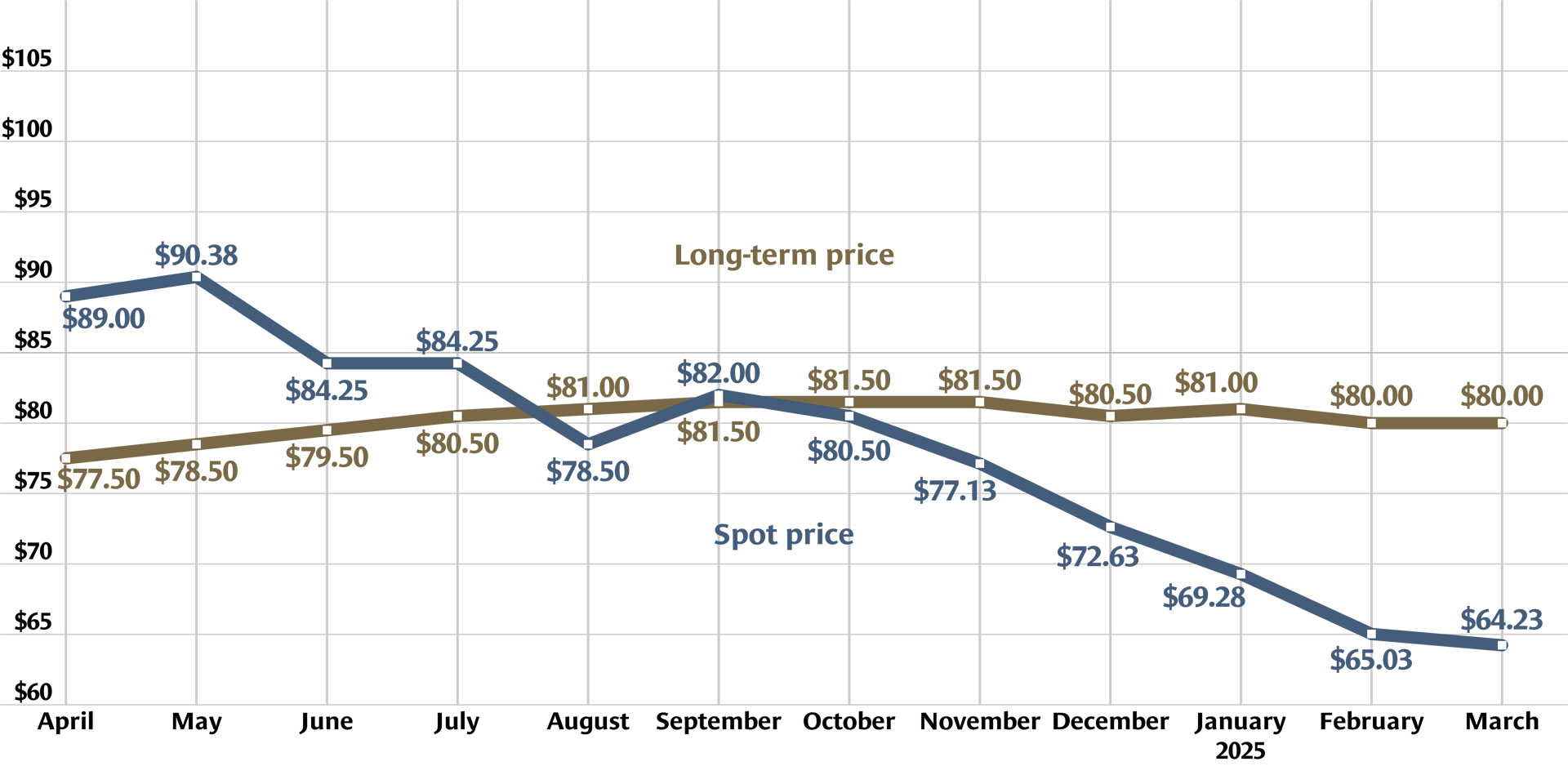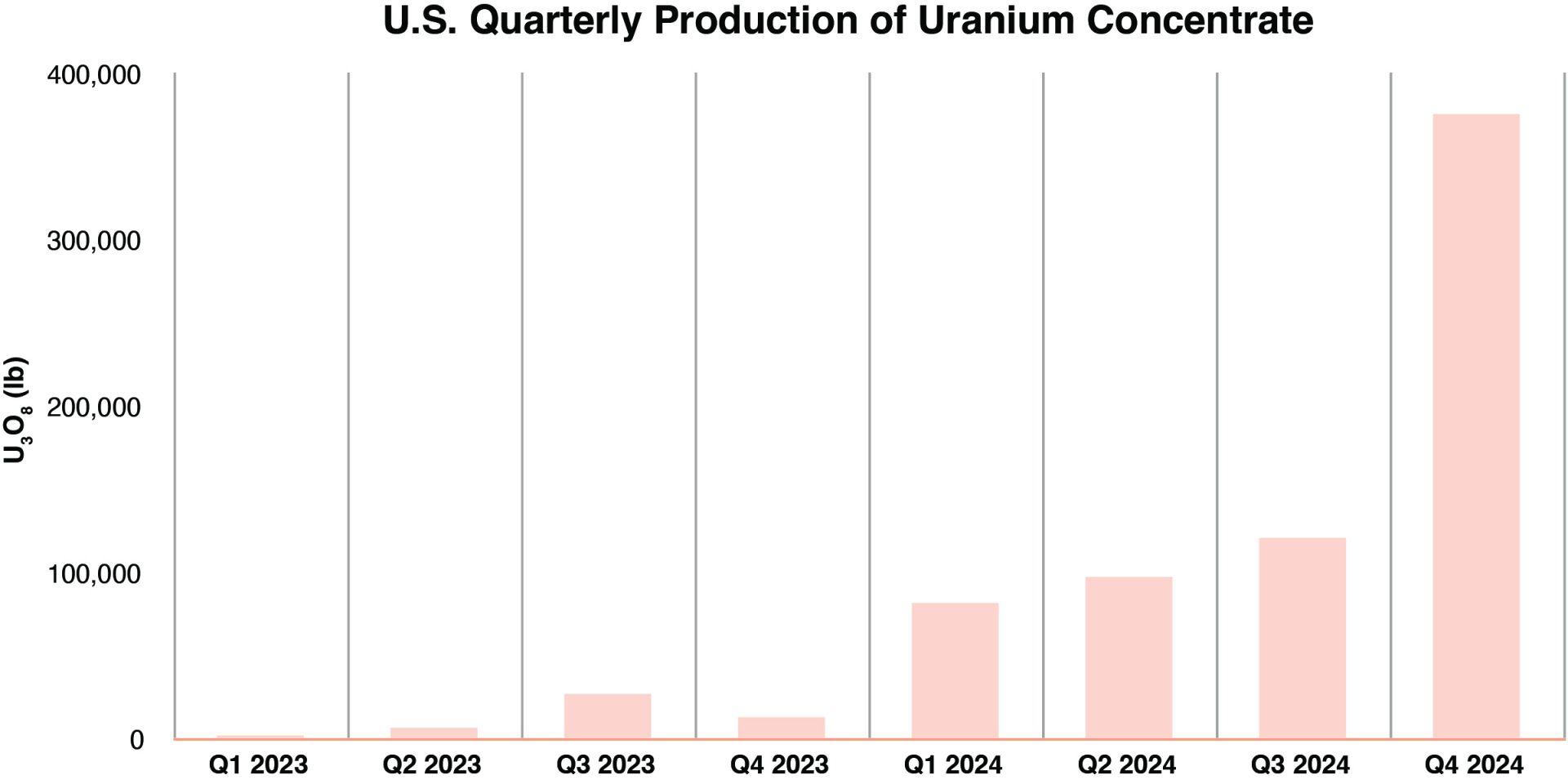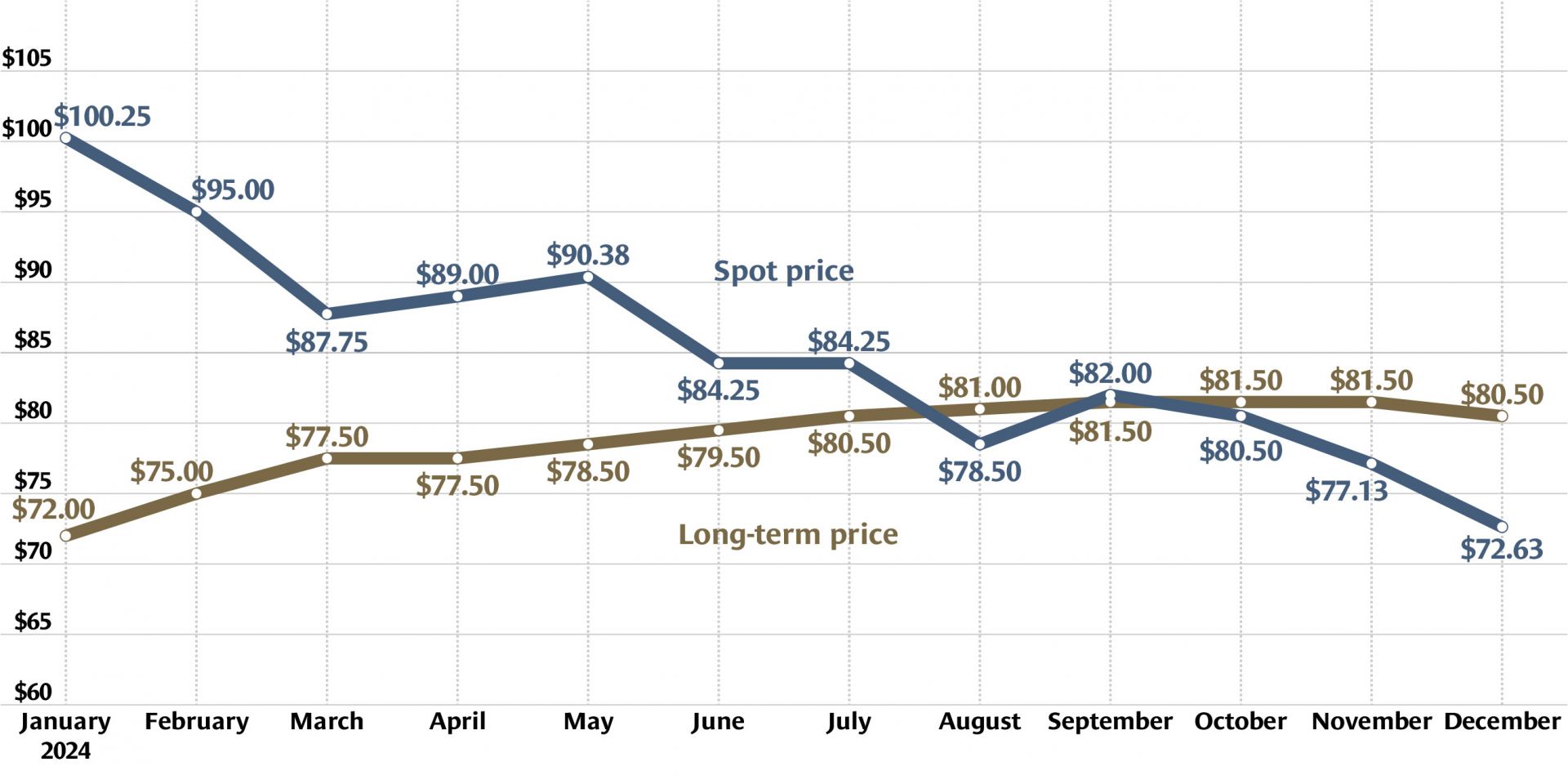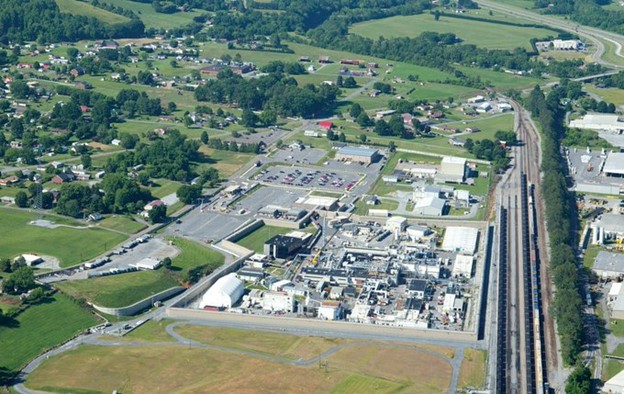Urenco staff at the facility in Eunice, N.M. (Photo: Urenco)
Urenco USA has initiated production of enriched uranium in its newest gas centrifuge enrichment cascade—the first in a planned expansion of its Eunice, N.M., facility announced in July 2023. When the expansion is complete, early in 2027, the site will have increased its capacity by about 15 percent, adding about 700,000 separative work units (SWU) per year, the company said May 19.
In situ uranium processing equipment at Lost Creek. (Photo: Ur-Energy)
Ur-Energy Inc. has secured approval from the Wyoming Department of Environmental Quality’s Land Quality Division to construct and operate up to six additional mine units at its Lost Creek in situ uranium mine in south-central Wyoming. With that late April approval in hand, “we await only final concurrence and approval of the related aquifer exemption from the U.S. Environmental Protection Agency,” the company said. That approval was granted just three days later, on May 1, but Ur-Energy doesn’t plan to expand Lost Creek for “several years.”
Graph: Nuclear News; data source: U.S. EIA
U.S. uranium production increased throughout 2024, with more growth planned in 2025. The producers who can make that happen, however, were burned before by a “renaissance” that didn’t take off. Now they are watching and waiting for signals from Washington, D.C., including the impacts of tariffs, shifting relationships with global uranium producers, and funding for the enrichment task orders designed to boost demand for U.S. uranium.
At NRC headquarters are (from left) UUSA’s Gerard Poortman, Wyatt Padgett, Lisa Hardison, and Paul Lorskulsint (seated), with the NRC’s James Downs (seated), Shana Helton, Kimyata Morgan-Butler, John Lubinski, and Johnathan Rowley. (Photo: Urenco USA)
Just one day after Urenco USA (UUSA) was picked by the Department of Energy as one of six contractors eligible to compete for future low-enriched uranium task orders, the Nuclear Regulatory Commission on December 11 formally approved the company’s license amendment request to boost uranium enrichment levels at its Eunice, N.M., enrichment facility to 10 percent fissile uranium-235—up from its current limit of 5.5 percent.
The Nuclear Fuel Services facility in Erwin, Tenn. (Photo: BWXT)
BWX Technologies subsidiary Nuclear Fuel Services Inc. suspended operations last Friday at a Tennessee facility to assess conditions following Hurricane Helene. A company spokesperson said the site remained "in safe and secure condition."



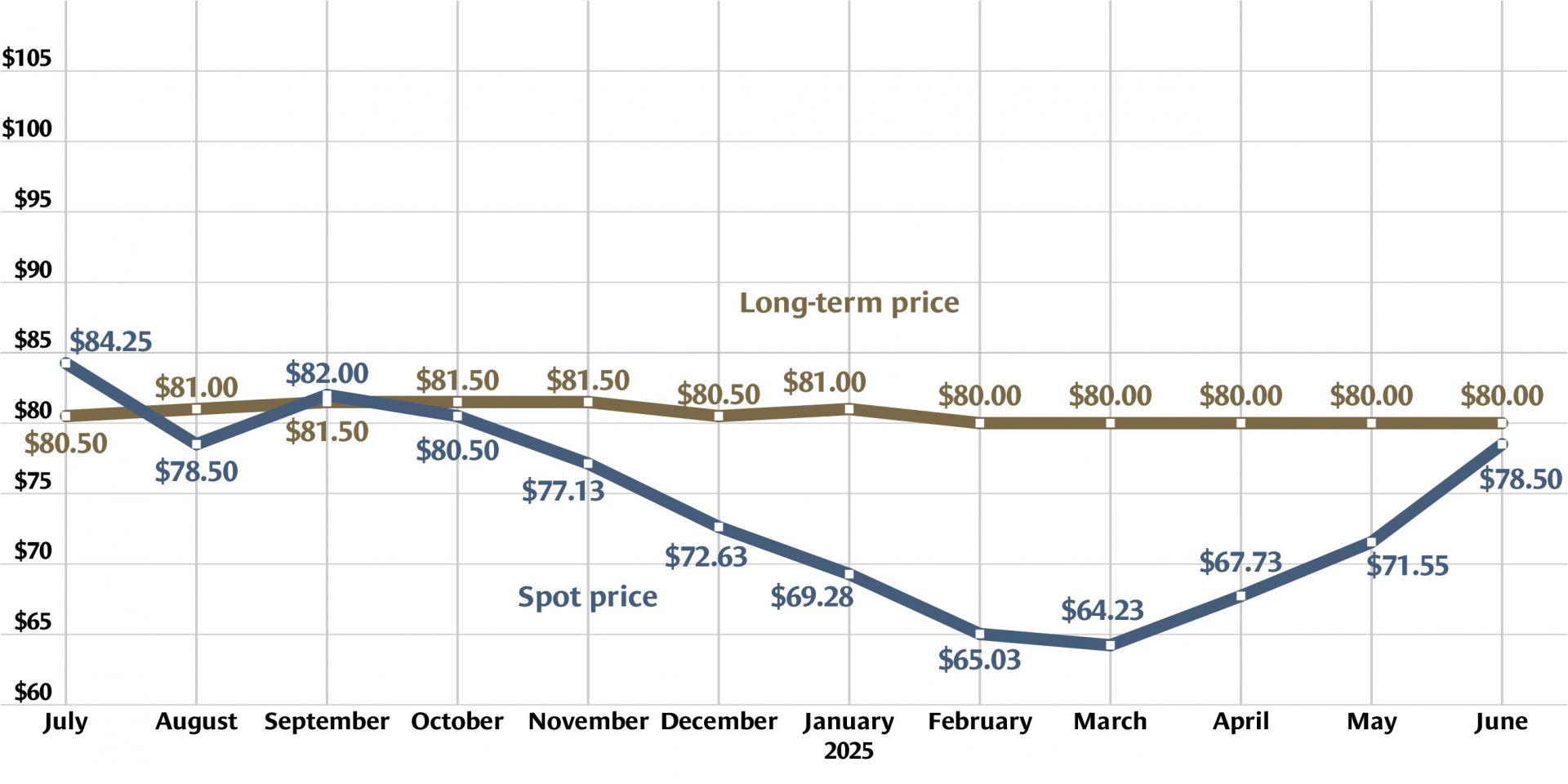
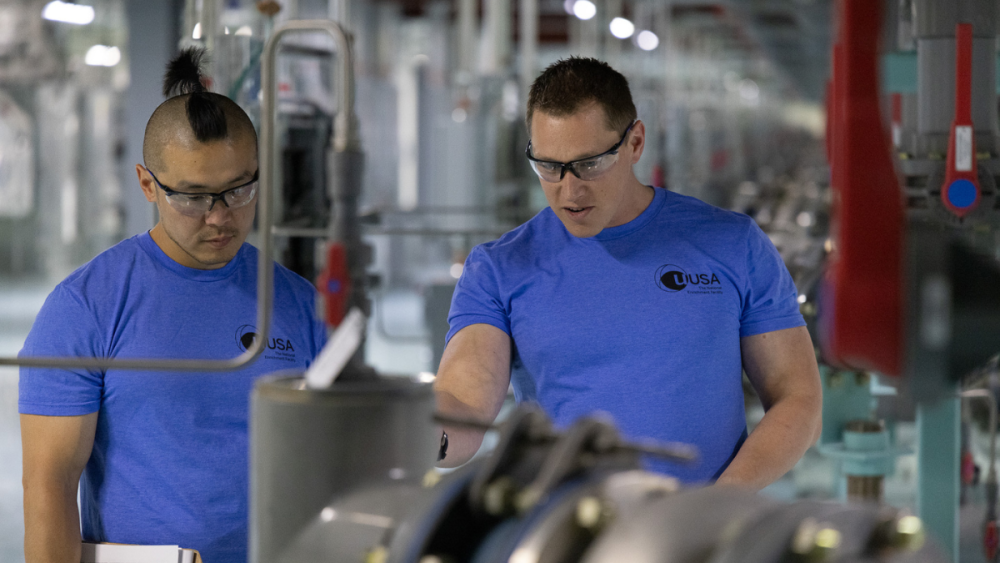

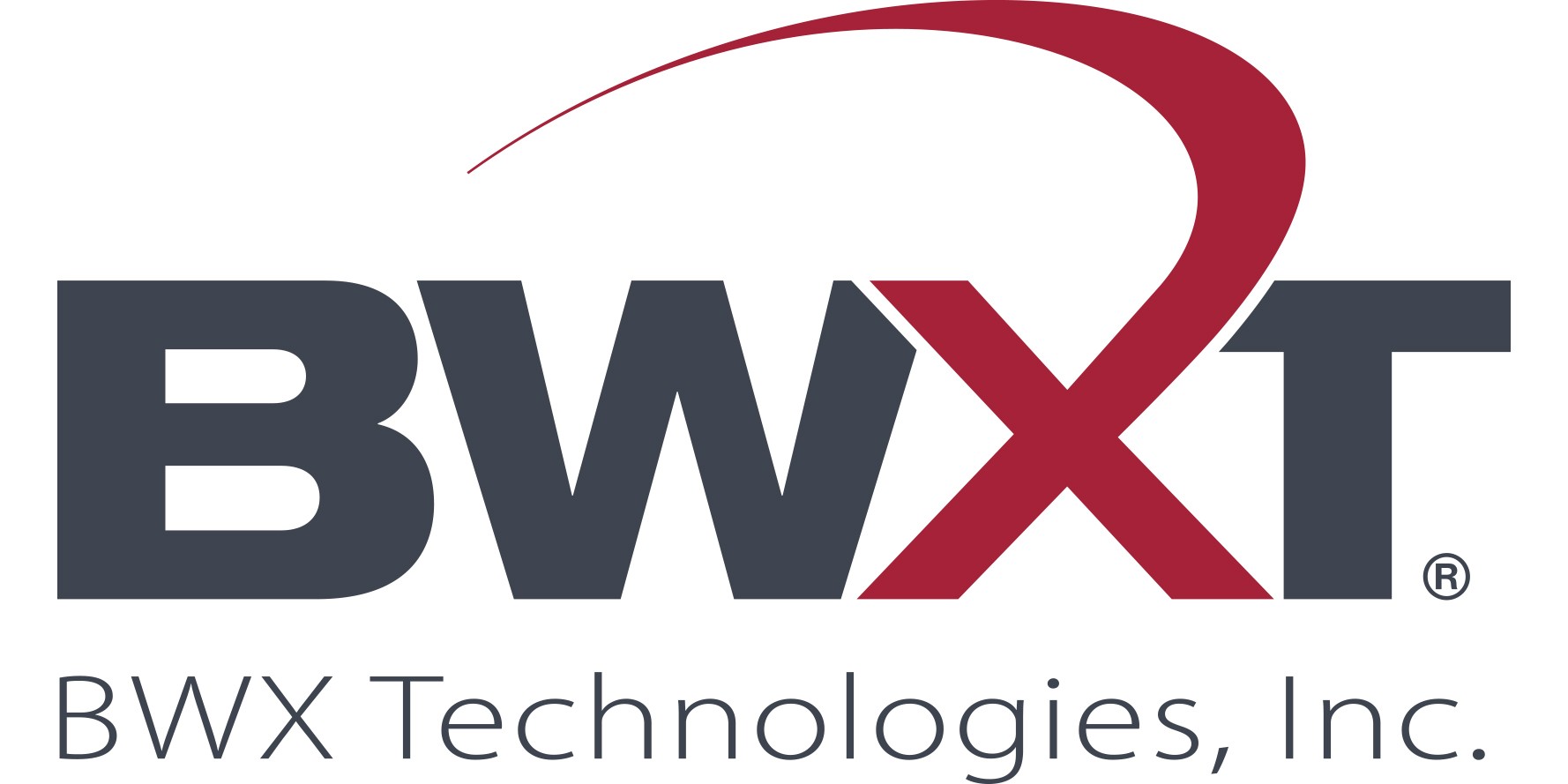
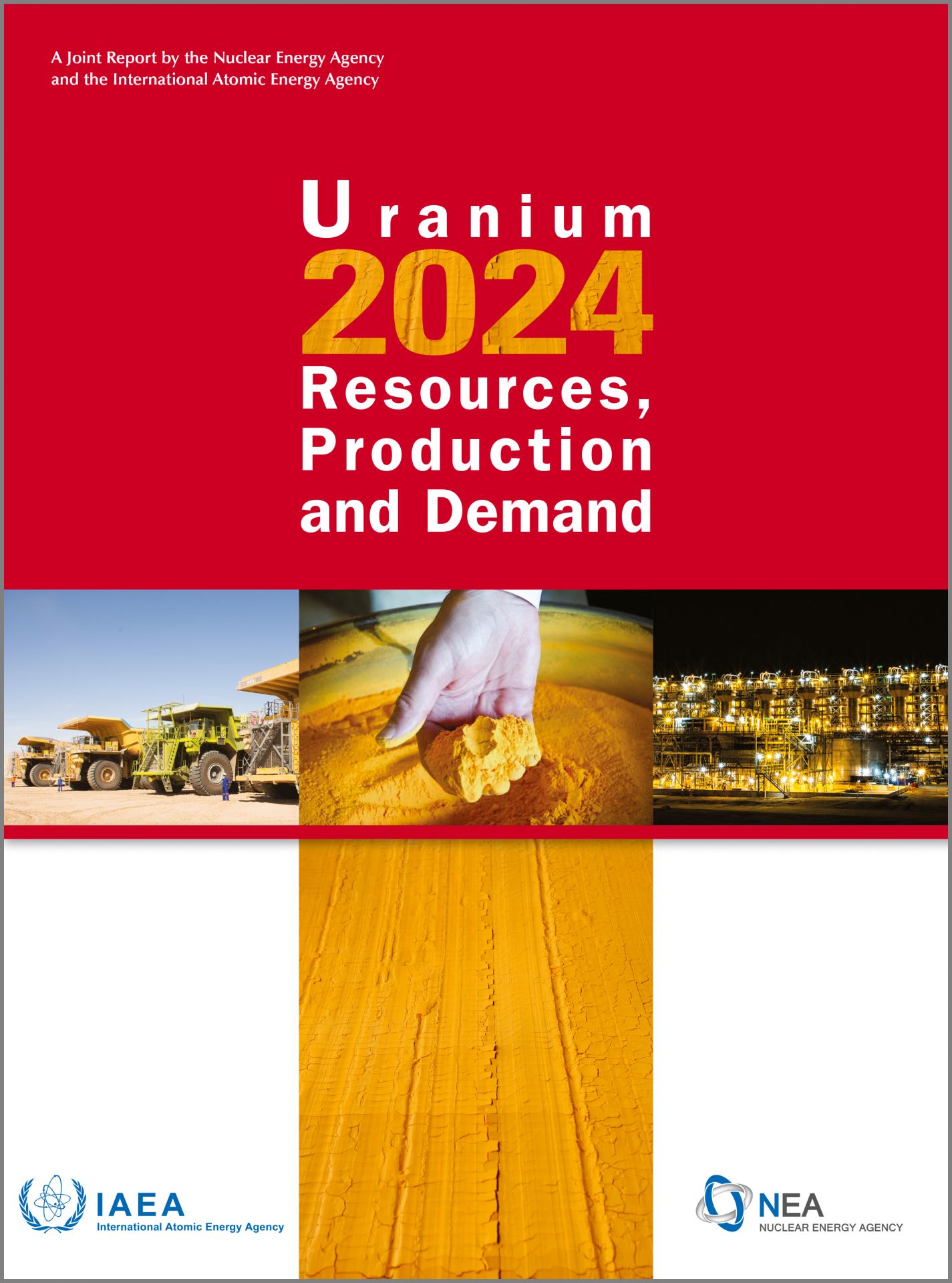 The latest edition of
The latest edition of 
